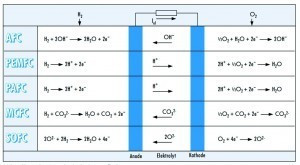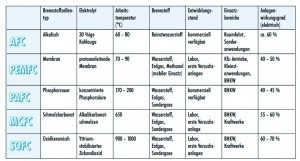Stationary fuel cell to go into series production by 2024. The world's largest automotive supplier loves quiet tones: Bosch is preparing for a future with fuel cells by expanding its involvement in the British company Ceres Power - with a further €90 million investment at the beginning of 2020, the company increased its stake there to 18%. The fact that the company has now also acquired stakes in the Swedish company PowerCell and the US start-up Nikola Motor underlines this strategy.
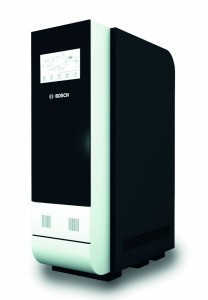 Fig. 2: SOFC unit, for decentralized power plants Coupling several modules Bosch is also getting serious about stationary fuel cells. In 2024, the company plans to start series production of decentralized power plants based on solid oxide fuel cell technology and has agreed on an in-depth collaboration with Ceres Power. Following a successful prototype construction phase, both companies now want to drive forward the pre-industrialization of stationary fuel cells. Bosch is aiming for a production capacity of SOFC systems of around 200 megawatts per year. This would be enough to supply around 400,000 people with electricity in their homes. The company intends to invest a three-digit million sum in the planned series production.
Fig. 2: SOFC unit, for decentralized power plants Coupling several modules Bosch is also getting serious about stationary fuel cells. In 2024, the company plans to start series production of decentralized power plants based on solid oxide fuel cell technology and has agreed on an in-depth collaboration with Ceres Power. Following a successful prototype construction phase, both companies now want to drive forward the pre-industrialization of stationary fuel cells. Bosch is aiming for a production capacity of SOFC systems of around 200 megawatts per year. This would be enough to supply around 400,000 people with electricity in their homes. The company intends to invest a three-digit million sum in the planned series production.
Production is to be located in Bamberg, Wernau and Homburg, while development will take place in Stuttgart-Feuerbach and Renningen. Bosch is thus positioning itself as a system provider for stationary fuel cells with its own added value in the cell and stack area.
Goal: Decentralized energy supply
SOFC technology is to be used in the form of small, decentralized, networkable power plants in cities, factories, trade and commerce, data centers and in the field of electric charging infrastructure. Bosch estimates that the market for decentralized energy production will reach a volume of € 20 billion by 2030(Fig. 1 and 2)
New division is being created
More than 250 Bosch associates are currently working on this topic of the future. Bosch is establishing a new business segment with stationary fuel cell systems.
Since August 2018, Bosch has been successfully cooperating with Ceres Power in the development of fuel cells and fuel cell stacks. Sample production was launched in Germany in the fall of 2019 and in January 2020, Bosch acquired a stake of around 18% in the British company. Series production is to be expanded by 2024. Ceres Power brings a wealth of experience in the production of fuel cell stacks and Bosch has the manufacturing expertise to produce pioneering stationary fuel cell systems(Fig. 3 and 4)
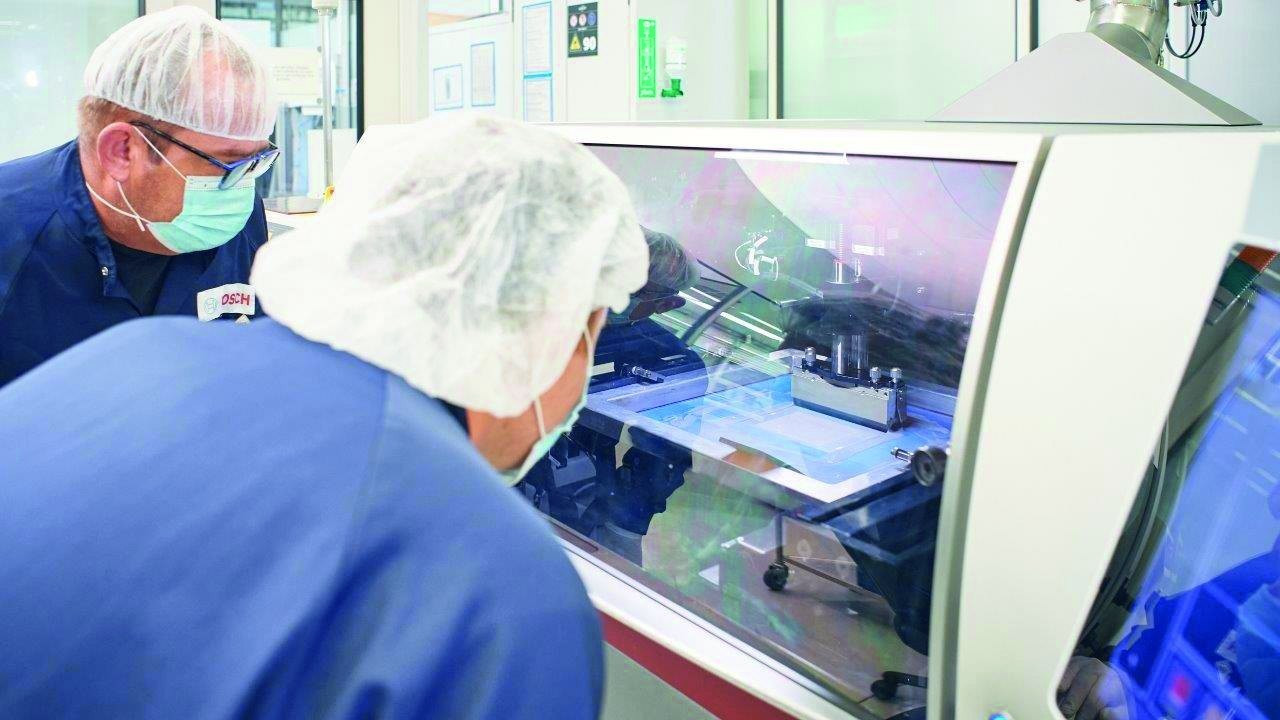 Fig. 3: Production of solid oxide fuel cells at the Bamberg plant
Fig. 3: Production of solid oxide fuel cells at the Bamberg plant
SOFC systems are already hydrogen-compatible
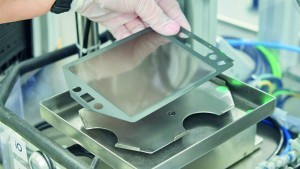 Fig. 4: Stack production for SOFC fuel cellsCeresPower is a leader in the development of innovative solid oxide fuel cells and cell stacks. Bosch holds a comprehensive technology license from Ceres Power and has been manufacturing fuel cells and stacks in-house since 2019. Pilot systems based on solid oxide fuel cells are already being successfully tested at various Bosch locations. The SOFC systems can be operated with environmentally friendly biogas or natural gas today - and are already hydrogen-capable for the energy system of tomorrow(Fig. 5 and 6).
Fig. 4: Stack production for SOFC fuel cellsCeresPower is a leader in the development of innovative solid oxide fuel cells and cell stacks. Bosch holds a comprehensive technology license from Ceres Power and has been manufacturing fuel cells and stacks in-house since 2019. Pilot systems based on solid oxide fuel cells are already being successfully tested at various Bosch locations. The SOFC systems can be operated with environmentally friendly biogas or natural gas today - and are already hydrogen-capable for the energy system of tomorrow(Fig. 5 and 6).
For cities and conurbations with high energy requirements, SOFC systems can ensure a sustainable energy supply - without nitrogen oxide, particulate orCO2 emissions. With an overall efficiency of more than 85%, the solid oxide fuel cell is clearly superior to any other energy converter. Depending on energy requirements, any number of systems with the same output can be interconnected in the future. This networking of appliances can be used to create virtual power plants, which together enable a demand-oriented energy supply at the point of consumption.
Goals of the national hydrogen strategy
According to the goals of the national hydrogen strategy, the German government anticipates a hydrogen demand of approx. 90 to 110 TWh by 2030. In order to cover part of this demand, production plants with a total output of up to 5 GW, including the necessary offshore and onshore energy generation, are to be built in Germany by 2030.
This corresponds to green hydrogen production of up to 14 TWh and a required amount of renewable electricity of up to 20 TWh. It must be ensured that the demand for electricity induced by the electrolysis plants does not result in an increase inCO2 emissions. As part of the monitoring of the national hydrogen strategy, the German government will also record the development of demand for green hydrogen in detail. If possible, a further 5 GW will be added for the period up to 2035, at the latest by 2040.
SOFC - solid oxide fuel cell suppliers
Today, manufacturers are increasingly developing SOFC systems. For domestic energy supply, these include Bosch Thermotechnik / Aisin Seiki, SOLID-power (combining the former suppliers Ceramic Fuel Cells and SOFCpower), Ceres Power, Vaillant / Sunfire and Viessmann / HEXIS.
Companies working on larger plants to supply commercial and industrial applications (natural gas, ~20-200 kWel) include Bloom Energy, Convion Oy and Fuel Cell Energy.
In a nutshell:
- Decentralized energy supply with stationary fuel cells is expected to create a market worth €20 billion by 2030.
- With its 18% stake in the British company Ceres Power, Bosch has secured the expertise and production licenses for the manufacture of solid oxide fuel cells.
- Compared to the electricity mix in Germany, an SOFC fuel cell system saves up to 40% inCO2 emissions, even when running on natural gas. If the fuel cell is operated with hydrogen or green gas, there are no more directCO2 emissions.
- An SOFC unit with an output of 10 kW can cover the annual electricity requirements of more than 20 four-person households.
- According to the national hydrogen strategy of 2020, green hydrogen of up to 14 TWh is to be produced by 2030 with a required amount of renewable electricity of up to 20 TWh.
The German energy transition is a chilling example of miserable regulatory policy and technical failure: it began with an EEG law without any annual subsidy limits for the expansion of solar installations. As a result, highly subsidized solar cells with 20-year fixed-price electricity purchase guarantees were installed on every roof, no matter how crooked. The German solar industry was also highly subsidized. This industry has since gone completely bankrupt here and is now located in China.
Then an accidental tsunami dooms the Fukushima nuclear power plant, which was built too close to the coast. We then shut down our German nuclear power plants, which produceCO2-free electricity, much earlier. However, these are available anyway and are far safer than over 400 mostly Russian or Chinese nuclear power plants. These will continue to be diligently built in high double-digit numbers around the world over the next 10 years.
The results of the German energy transition speak for themselves. In 2018, Germany emitted 9.1 tons ofCO2 per capita per year, Spain 5.7 tons per capita, France 5.2 tons per capita and Switzerland 4.3 tons per capita. We also pay the highest electricity costs of all industrialized countries for this result.
I wish you a healthy start to the new year.
Best regards
Yours
Hans-Joachim Friedrichkeit


